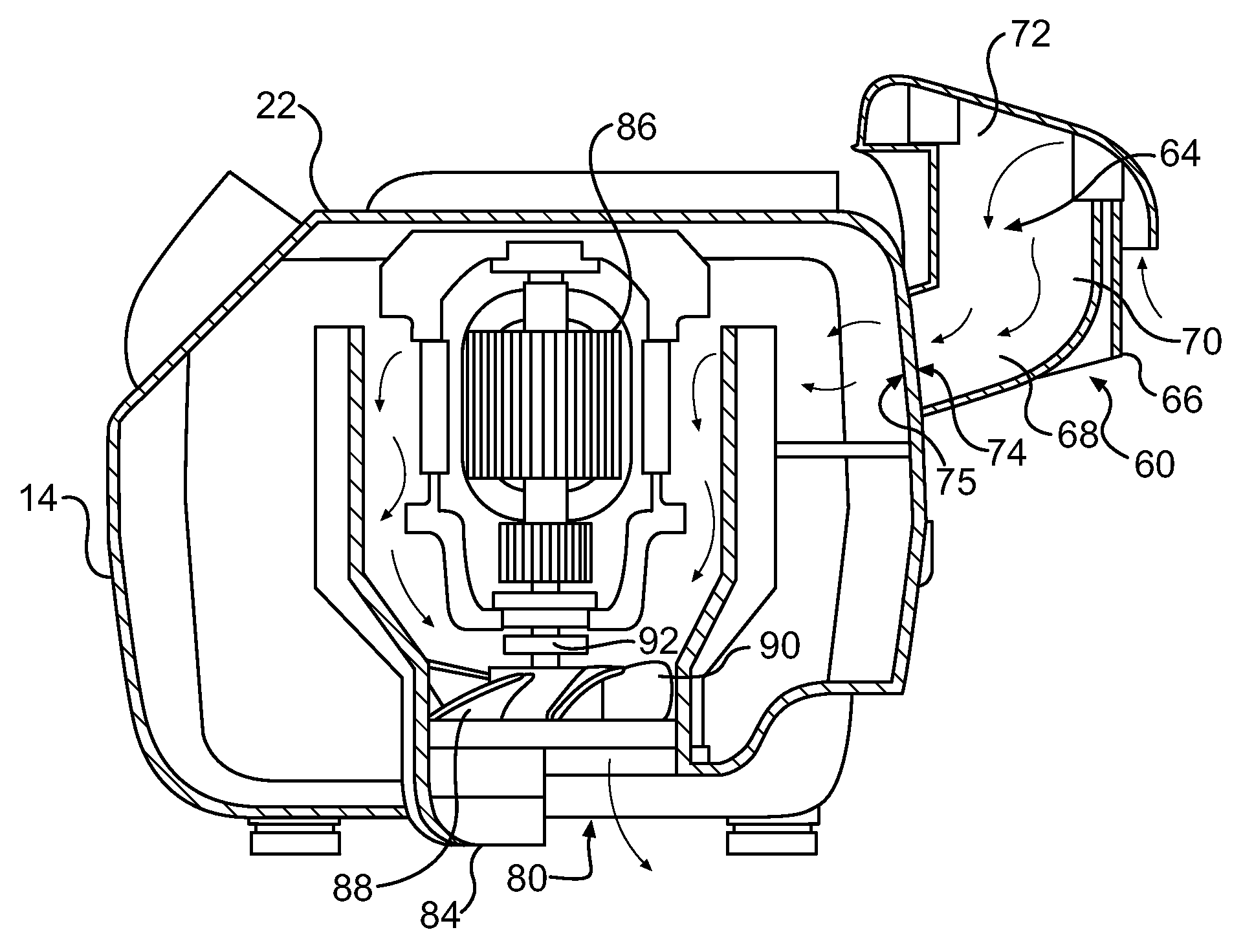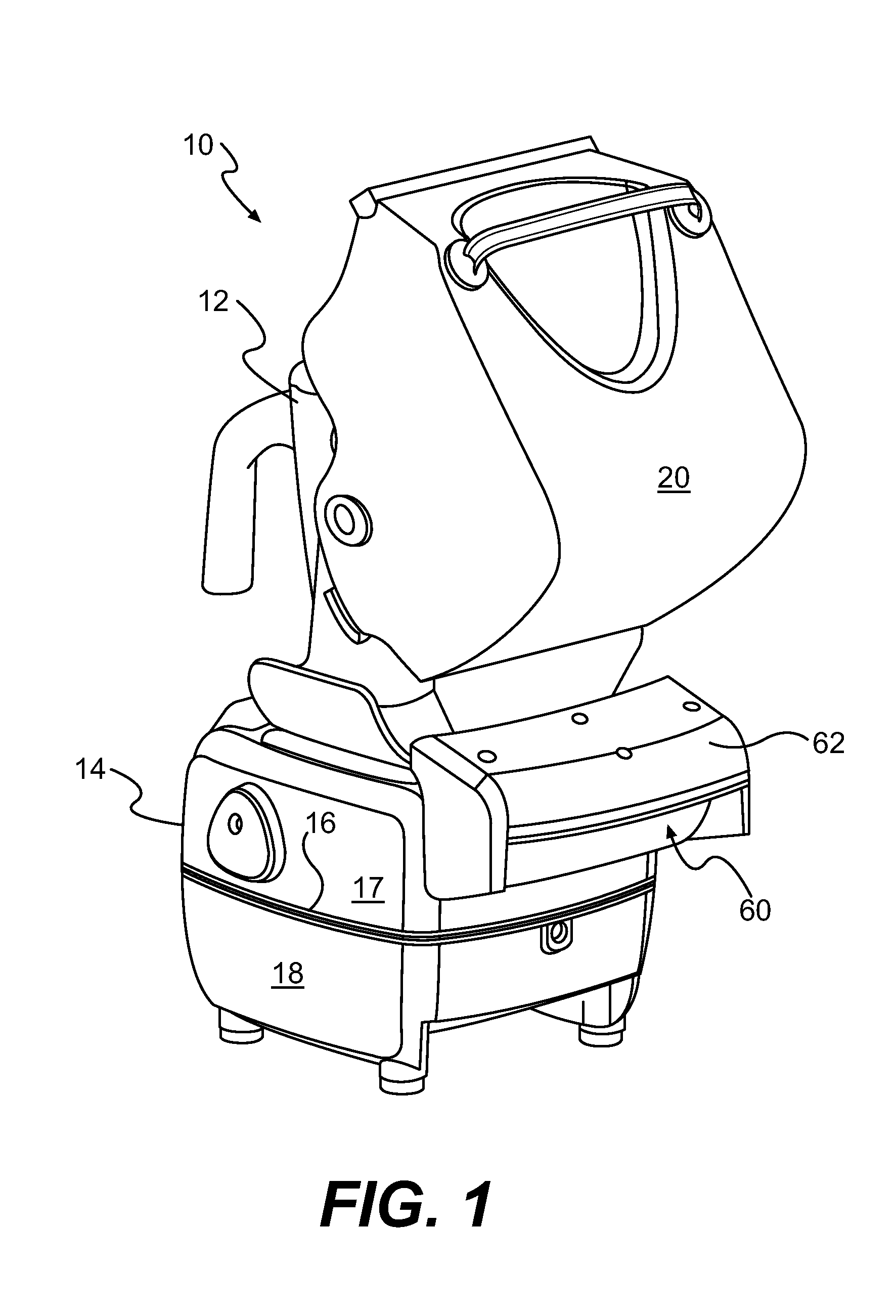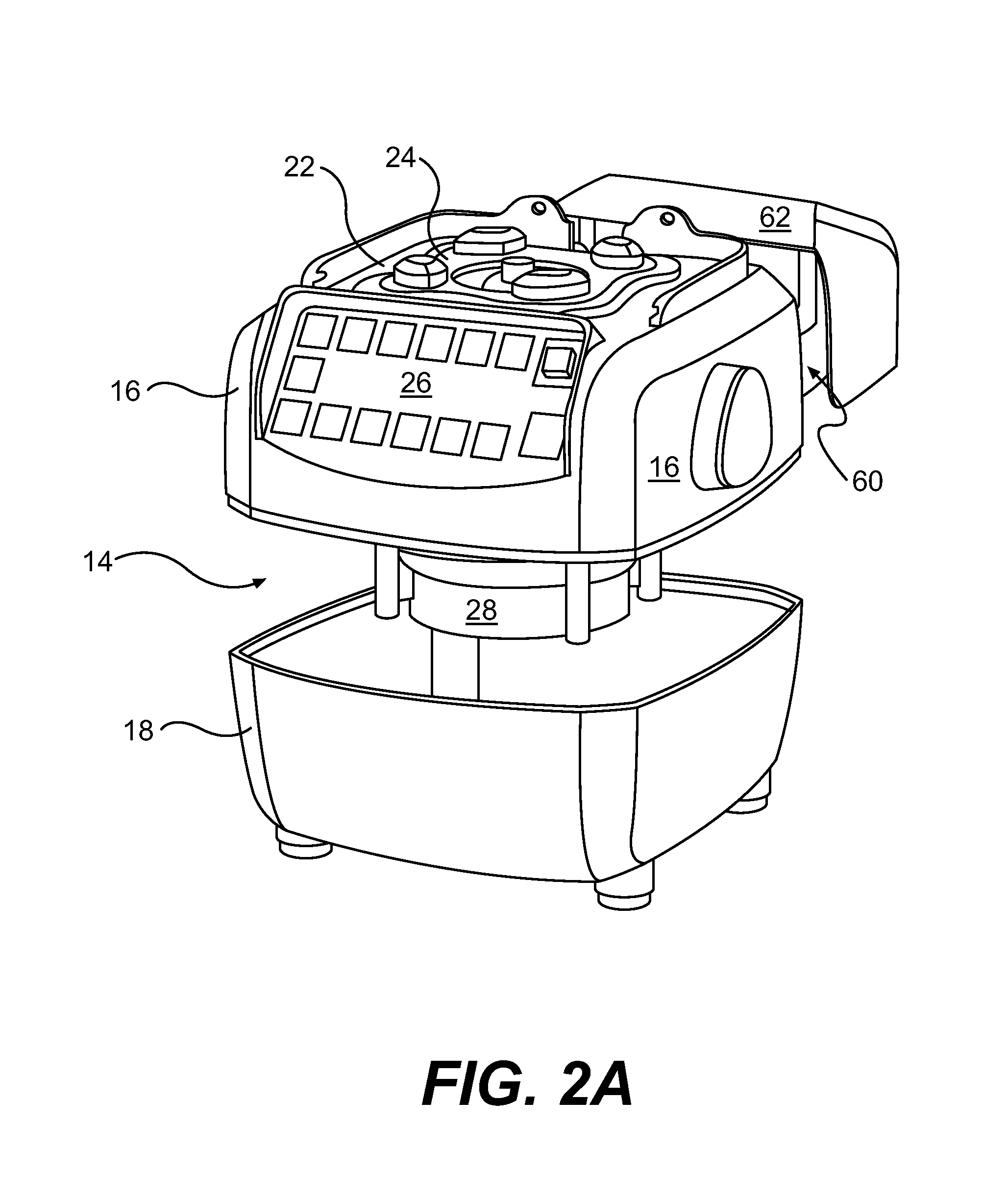Blender air intake snorkel for countertop or in-counter installations
a technology for countertop or in-counter installations, which is applied in the direction of juice extraction, indirect heat exchangers, lighting and heating apparatus, etc. it can solve the problems insufficient cooling air moving, and inefficient cooling systems of existing appliances, so as to reduce noise, reduce the possibility of contaminating the blender motor housing, and reduce the effect of air flow
- Summary
- Abstract
- Description
- Claims
- Application Information
AI Technical Summary
Benefits of technology
Problems solved by technology
Method used
Image
Examples
Embodiment Construction
[0026]As will be described in detail herein, the supply of an air flow through a blender motor housing (a.k.a., a ‘blender base’) can be improved by an air intake snorkel to increase cooling effect, reduce noise, and reduce or eliminate contamination of the air intake. An air intake snorkel may also be designed for selective countertop and in-counter installations of the same blender. The possible variations of the snorkel are adaptable for use with many existing motor housings. Accordingly, the specific structure disclosed should not and is not a reasonable limitation of the scope of the present invention. The following describes certain preferred embodiments of an air intake snorkel and a blender with such a snorkel.
[0027]Turning first to FIG. 1, there is illustrated a blender 10 having a blender jar 12 mounted onto the blender base or motor housing 14. Housing 14 may be an integral, one-piece shell to enclose a motor and the corresponding appliance electronics. The specific shape...
PUM
 Login to View More
Login to View More Abstract
Description
Claims
Application Information
 Login to View More
Login to View More - R&D
- Intellectual Property
- Life Sciences
- Materials
- Tech Scout
- Unparalleled Data Quality
- Higher Quality Content
- 60% Fewer Hallucinations
Browse by: Latest US Patents, China's latest patents, Technical Efficacy Thesaurus, Application Domain, Technology Topic, Popular Technical Reports.
© 2025 PatSnap. All rights reserved.Legal|Privacy policy|Modern Slavery Act Transparency Statement|Sitemap|About US| Contact US: help@patsnap.com



